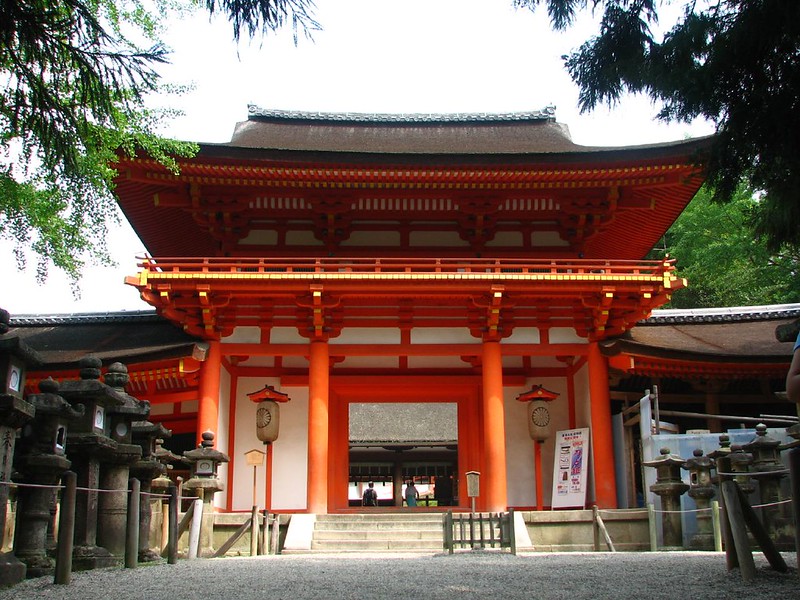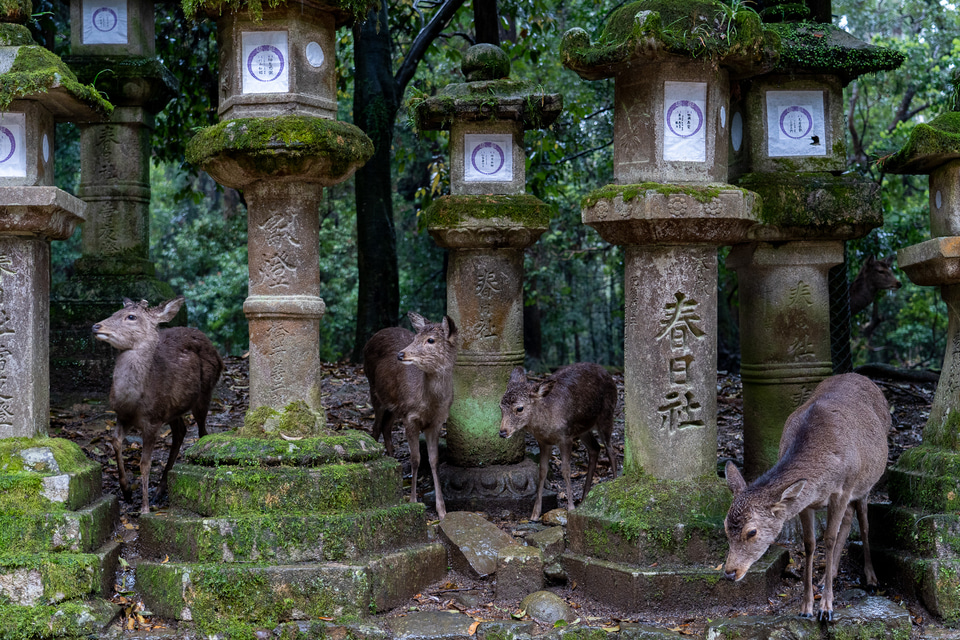


Kasuga Taisha
Nara's sacred shrine of a thousand lanterns, where gods ride on the backs of deer.
A UNESCO World Heritage site in Nara, Kasuga Taisha is the ancestral shrine of the powerful Fujiwara clan, renowned for its thousands of bronze and stone lanterns and the tame deer that roam its grounds.
History of the Shrine
Kasuga Taisha was founded in 768 AD at the request of the powerful Fujiwara clan, which dominated Japanese politics during the Heian period. To protect the newly established capital of Nara and to ensure the prosperity of their clan, the Fujiwara family invited four powerful kami to be enshrined here. This act established the shrine as both a political and religious center of power, inextricably linked to one of Japan's most influential families.
Like Ise Jingu, Kasuga Taisha also observes the tradition of 'Shikinen Zotai', a periodic rebuilding of the shrine every 20 years to maintain its purity and renew the power of its kami. This has ensured the preservation of its unique architectural style and craftsmanship for over a millennium. The shrine's deep connection with the Fujiwara clan is evident in the sheer number of donated lanterns that fill its grounds, a testament to the family's enduring faith and influence.
The Enshrined Kami
Kasuga Taisha enshrines a complex of four principal kami, invited by the Fujiwara clan to act as their divine protectors. They are:
- Takemikazuchi-no-mikoto: The martial kami from Kashima Jingu, who rode the white deer to Nara.
- Futsunushi-no-kami: Another powerful sword kami from Katori Shrine.
- Ame-no-koyane-no-mikoto: The mythical ancestor of the Fujiwara clan, a kami of wisdom and ritual.
- Himegami: The consort of Ame-no-koyane.
This powerful assembly of deities provided the Fujiwara clan with both martial protection and divine legitimacy. Their worship ensures the protection of the nation and the prosperity of families.
What to See
The shrine's most captivating feature is its thousands of lanterns. Over 2,000 stone lanterns ('ishidoro'), many covered in moss, line the winding paths leading to the shrine, creating a mystical, ancient atmosphere. Inside the shrine's corridors, over 1,000 bronze lanterns ('tsuridoro') hang in dense rows. These lanterns are only lit twice a year, during the 'Mantoro' festivals, but their sheer number is a breathtaking sight at any time.
The approach to the shrine through Nara Park is famous for its hundreds of tame sika deer. According to shrine legend, the kami Takemikazuchi arrived in Nara riding a white deer. Because of this, the deer are considered sacred messengers of the gods, and they are a protected National Treasure. Visitors can purchase special crackers ('shika-senbei') to feed them, and many deer have learned to bow to ask for a treat.
Major Festivals
The 'Mantoro' (Thousand Lanterns) festivals, held twice a year in early February (Setsubun) and mid-August (Obon), are the shrine's most beautiful events. During these festivals, all 3,000 of the shrine's lanterns are lit simultaneously at dusk, creating a stunning and ethereal sea of light. The 'Kasuga Wakamiya On-Matsuri' in December is a large classical performing arts festival that has been held for over 800 years without interruption, a prayer for a bountiful harvest and peace.
Support Kasuga Taisha
Your participation helps preserve this sacred site for future generations. Every digital offering contributes to real shrine preservation efforts across Japan.
By making an offering, you become part of a global community honoring Japanese spiritual traditions and supporting the cultural heritage that has been cherished for centuries.